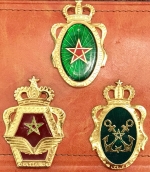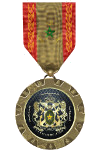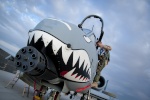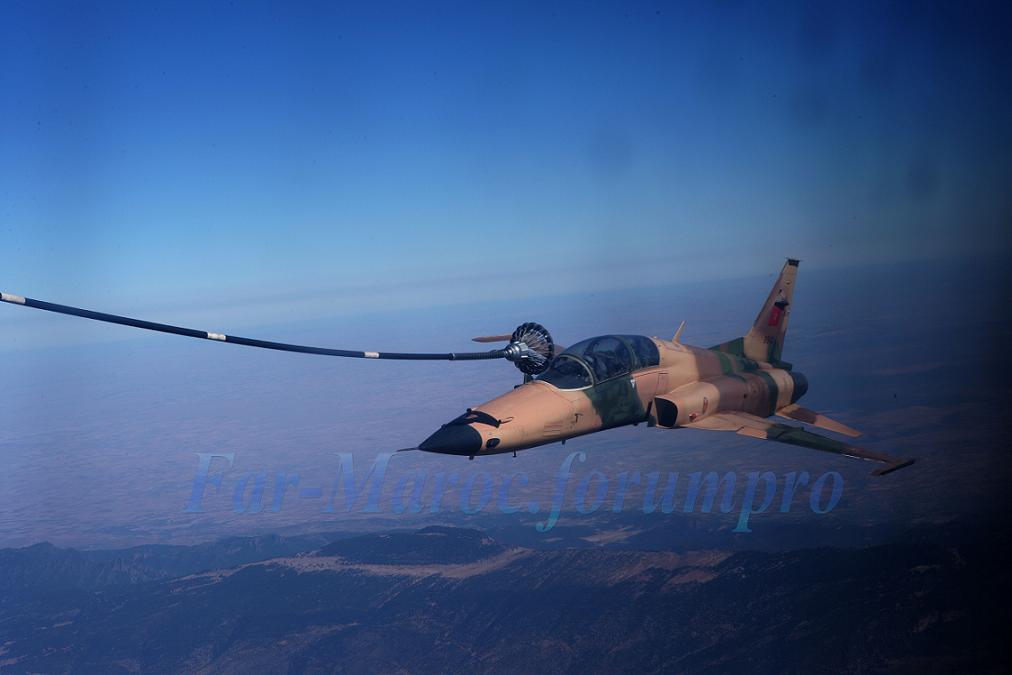
Moroccan Military Forum alias FAR-MAROC
Royal Moroccan Armed Forces Royal Moroccan Navy Royal Moroccan Air Forces Forces Armées Royales Forces Royales Air Marine Royale Marocaine
|
| | | Exercice African Lion 2010 |  |
| | | Auteur | Message |
|---|
rmaf
Administrateur


messages : 15083
Inscrit le : 18/03/2007
Nationalité : 
Médailles de mérite : 
 |  Sujet: Exercice African Lion 2010 Sujet: Exercice African Lion 2010  Mar 8 Juin 2010 - 12:56 Mar 8 Juin 2010 - 12:56 | |
| - Citation :
- Marine Corps Reserve KC-130 aircraft conduct refueling missions over Morocco during AFRICAN LION 2010
KENITRA, Morocco — Marines and sailors from Marine Aerial Refueler Transport Squadron 234, a Marine Forces Reserve unit based in Fort Worth, Texas, are here on a two-week reserve summer deployment with the primary mission of conducting aerial refueling flights in support of the Royal Moroccan Air Force.
The squadron has flown more than 10 sorties in the past week, refueling Moroccan F-5 jet fighters at high altitude.
“I was impressed with them,” said Capt. David Grosso, a KC-130 pilot with the squadron after his first refueling mission with the Moroccans May 31. “They’re really proficient in aerial refueling. You could tell when they had an experienced pilot or when they had a new guy in the seat, just like with (U.S.) Marine Corps pilots.”
In aerial refueling, the KC-130s extend hoses, which are housed in large pods under the plane’s wings. At the end of the hoses are paradrogue assemblies, which are about the size of 50-gallon drums and are commonly called “baskets.”
The jets have refueling probes on their front of the aircraft. The jet pilots line their probes up with the KC-130 baskets. The jet slightly increases its velocity to move its probe into the paradrogue. This is done at about 16,000 feet.
Metal spokes on the paradrogue assembly, which the Marines refer to as “turkey feathers” because of their shape and configuration, guide the probe into the refueling coupling. A cloth parachute on the basket catches the wind and opens up the turkey feathers wide, giving the jets a clear target.
The KC-130 flight engineer, who sits up in the cockpit with the pilots, is in charge of extending the in-flight refueling hoses. The flight engineer monitors the aircraft systems and regulates both the fuel usage and fuel transfer simultaneously.
To conceptualize what the refueling experience is like for a jet pilot, imagine having a long, steel arm rising out of the hood of your car, just in front of the right-hand side of your windshield. You have to speed up slightly to insert this steel arm into a small parachute dangling from the back of a tractor trailer going more than three hundred miles an hour on a bad road with an excessive cross-wind blowing.
A successful refueling mission therefore requires extensive skill and experience on the part of all involved, particularly the jet pilot.
“It went smooth. Those guys are good to go,” said Gunnery Sgt. Richard Warren, one of the squadron’s flight engineers, who has been in Marine Corps aviation for about 16 years.
“They follow all the same procedures in NATO publications,” explained Warren. “The hardest part is the link up. Everyone has to be at the right altitude. Putting a bunch of airplanes together in the same air space is inherently dangerous, regardless of what country they’re from.”
The American KC-130 flight crew communicates simultaneously with the Moroccan air traffic control center in Rabat or Casablanca on one radio. With a second radio, they talk to the Moroccan F-5 pilots whose aircraft they are refueling.
Although the native languages in Morocco are Arabic and French, all Moroccan military pilots, air traffic controllers and flight operations personnel are proficient in English, the international language of aviation.
“Once we get in the air, the procedures are all the same,” said Cpl. Brice Kippes, a VMGR-234 flight mechanic from Iliff, Colo.
Kippes’ job during a refueling mission is to look out the windows of the paratrooper doors on each side of the plane to ensure the successful link-up between the refueling pods and jets’ probes. He is in communication with the flight crew in the cockpit via intercom, so he can let them know if there are any problems.
“Everything in the air is very strict and standardized,” said Kippes, who trained with the Moroccan Air Force during last summer’s African Lion, as well. “They use the same (Naval Air Training and Operating Procedures Standardization Manual) procedures that we do. They know what’s going on pretty well.”
The Moroccan Air Force also has KC-130 aircraft, which they routinely use to refuel their jets. The Moroccan “H” models are very similar to the Marine Corps Reserve’s “T” models, which makes training all that much easier, according to Staff Sgt. Stephen Rubel, a flight engineer with VMGR-234.
This aerial refueling is just one element of African Lion 2010, a theater security cooperation exercise between the United States and Morocco involving more than 1,000 U.S. troops, mostly reservists.
For the past seven years, African Lion has been conducted annually to further develop joint and combined capabilities between the two countries, who have been allies since Morocco became the first foreign country to recognize the United States’ independence in 1778.          | |
|   | | rmaf
Administrateur


messages : 15083
Inscrit le : 18/03/2007
Nationalité : 
Médailles de mérite : 
 |  Sujet: Re: Exercice African Lion 2010 Sujet: Re: Exercice African Lion 2010  Mar 8 Juin 2010 - 12:59 Mar 8 Juin 2010 - 12:59 | |
| F-5E 91932 et 39 F-5F 91942 King Air 100 CN-ANB/ANC et Super King AIr 200 CN-ANI | |
|   | | Invité
Invité
 |  Sujet: Re: Exercice African Lion 2010 Sujet: Re: Exercice African Lion 2010  Mar 8 Juin 2010 - 14:58 Mar 8 Juin 2010 - 14:58 | |
| Belles images!!  |
|   | | Yakuza
Administrateur


messages : 21656
Inscrit le : 15/09/2009
Localisation : 511
Nationalité : 
Médailles de mérite :  

 |  Sujet: Re: Exercice African Lion 2010 Sujet: Re: Exercice African Lion 2010  Mar 15 Juin 2010 - 16:16 Mar 15 Juin 2010 - 16:16 | |
| tres interessante technique qu´on apprennd la,la RGR(Rapid ground refueling),le KC-130 refuel alors des helicos en ground ou d´autres vehicules,elle est utilisée en Astan.. - Citation :
- Navigator plans flights, aviation portion of exercise during AFRICAN LION 2010
6/15/2010 By Sgt. Lydia M. Davey , Marine Forces Africa
KENITRA, Morocco — Clad in a tan flight suit, U.S. Marine Staff Sgt. Brett Trahan trades barbed jokes - the kind born of long hours spent working and living together - with his flight crew. Yet the group, no matter how familiar they may seem, treats him with a friendly respect. Trahan is legendary in his unit, and a hard worker; he is also marked. However, one would be hard pressed to recognize him as an endangered Marine Corps species if it weren’t for the unit patch sewn to his uniform, and two increasingly rare numbers typed into his service record book.
“There are only about 50 of us left in the Marine Corps,” said Trahan, a navigator with Marine Aerial Refueler Transport Squadron 234. “Navigators are only useful on the KC-130 legacy aircraft, and the Corps is phasing in a newer model aircraft. They’ve stopped sending us through the school house altogether.”
Trahan’s stocky figure looks relaxed, but his deep blue eyes remain alert.
Since his early high school years, the Orange, Texas-native had dreamed of becoming a Marine. Although Trahan’s sister joined the Air Force, and his brother joined the Navy, something about the Corps drew him on. In 1995, he took the plunge.
“I came in open contract and fell into the navigator position,” said Trahan. “I’ve stayed because of missions like AFRICAN LION – from the planning stage to the execution stage. I’ve stayed because of the camaraderie, and the opportunity to explore new places with a group of friends.”
The Mission
After 15 years in the active reserve, Trahan has a wealth of experience and knowledge.
That knowledge has lead to some exciting assignments, according to Maj. Charlie Pickett, aircraft commander with VMGR-234. For example, since 2006, Trahan has been the lead planner for the aviation aspect of AFRICAN LION 2010, the largest exercise within U.S. Africa Command’s area of activity.
“For the joint task force planning exercise, my main mission is to progressively employ the Royal Moroccan Air Force KC-130s in their tactical development, as well as maintain currency with their F-5 pilots in aerial refueling,” said Trahan. “I brought the original C-130 out here in 2006 to start this, and ever since I’ve been in on the planning phase just due to the consistency of having a reservist.”
Because the majority of the squadron’s pilots are reservists, their commercial airline schedules make it hard to keep the same person in the planning phase, according to Trahan.
“He is experienced way beyond a staff sergeant level,” said Pickett. “We give him the responsibility normally reserved for a major when it comes to planning this exercise. He handles it from the ground up, and comes out here several times a year for planning conferences. He is well versed in the intricacies and specifics of flying out here. He knows how much planning is required. Trahan literally gets this thing off the ground.”
The mission involves training pilots with the Royal Moroccan Air Force to employ the KC-130 in tactical environments through aerial refueling with fixed wing and rotary aircraft, rapid ground refueling, and night fueling capabilities training, according to Trahan.
“Aviation training is very important, primarily for the Moroccans,” said Maj. Nebyou Yonas, AFRICAN LION 2010 action officer with U.S. Marine Forces Africa. “They just recently purchased the equipment to outfit their C-130s to be aerial refueling capable, which means it is a combat multiplier. They can go further with their fixed wing aircraft and helicopters.”
Since 2006, the mission has evolved from a ground school, to this year’s focus on aerial refueling refreshers and the introduction of rapid ground refueling.
“Each year we’ve added a new layer,” said Pickett. “The Marine Corps operates the C-130 in such a broad range of aerial delivery, troop hauling, and refueling missions, that we could never teach everything we do in one month. So each year, Trahan comes out and works with the Moroccans to identify another training opportunity, and we tailor what we do to that.”
Training others brings value to the Marine Corps as well, according to Pickett.
“In training the Moroccans, we hone that skill as well,” he said. “We have to sharpen that skill before we come out to teach it. By training them, we’re actually improving our readiness. This year’s rapid ground refueling is a unique mission. We take the hoses off the airplane and offload fuel into ground-based vehicles. It’s useful for anything that can burn J-3 (similar to diesel) – which is almost everything we have.”
The unit uses a team of 38 Marines and two U.S. Army helicopter pilots to accomplish the mission, according to Pickett.
“We operate in a basic detachment mode with an officer-in-charge, senior enlisted, and we work internal to our positions as well to perform the staff functions of the squadron: the safety officer, maintenance officer and operations officer. There are six aircrew positions, and we have at least three Marines for each,” he noted. “We also have associated maintenance Marines to perform full maintenance out here.”
Camaraderie
Working with Moroccan pilots is an easy task, according to Pickett.
“They’re very sharp; they’re very good at what they do,” he said. “We learn just as much from them as we teach them, so it’s a great experience.”
Yet, although the formal friendship between the U.S. and Morocco dates back more than 200 years, personal relationships add greatly to mission effectiveness.
“Everybody knows Tray,” said Pickett, using a familiar nickname for Trahan. “He knows all the players here, and they respect him as much as we do. His value here is hard to quantify, but an example is this: as Marines, sometimes we just figure it out – kinda by the seat of our pants. Sometimes out here that doesn’t work so well. The Moroccans are great, extensive planners. A smile and a handshake from Tray go a long way to facilitate any problems we may come across.” Marines.mil F5F Tiger III n°91943 original  _________________  | |
|   | | Invité
Invité
 |  Sujet: Re: Exercice African Lion 2010 Sujet: Re: Exercice African Lion 2010  Mar 15 Juin 2010 - 16:43 Mar 15 Juin 2010 - 16:43 | |
| RMAF F-5E/F air-to-air refueling by an USMC KC-130T tanker
|
|   | | Contenu sponsorisé
 |  Sujet: Re: Exercice African Lion 2010 Sujet: Re: Exercice African Lion 2010  | |
| |
|   | | | | Exercice African Lion 2010 |  |
|
Sujets similaires |  |
|
| | Permission de ce forum: | Vous ne pouvez pas répondre aux sujets dans ce forum
| |
| |
| |
|

